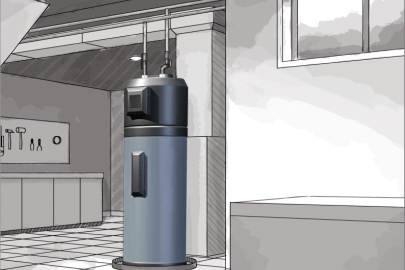Step-by-Step Guide to Maintaining Your Home's Hot Water System
Step-by-Step Guide to Maintaining Your Home's Hot Water System
Blog Article
We've discovered the article relating to Tips For Maintaining Your Hot Water Heater directly below on the web and reckoned it made good sense to discuss it with you over here.

Hot water is essential for day-to-day comfort, whether it's for a refreshing shower or cleaning dishes. To guarantee your hot water system runs successfully and lasts longer, normal maintenance is key. This post offers sensible suggestions and understandings on exactly how to keep your home's hot water system to stay clear of interruptions and costly repair services.
Introduction
Preserving your home's hot water system may seem complicated, but with a couple of basic steps, you can guarantee it operates efficiently for years to find. This overview covers whatever from recognizing your warm water system to DIY maintenance ideas and understanding when to call in specialist help.
Value of Preserving Your Warm Water System
Routine upkeep not just prolongs the lifespan of your hot water system yet additionally guarantees it runs effectively. Overlooking upkeep can bring about lowered effectiveness, greater energy expenses, and even early failure of the system.
Indications Your Warm Water System Needs Maintenance
Understanding when your hot water system needs focus can prevent major problems. Keep an eye out for signs such as inconsistent water temperature level, unusual sounds from the heating system, or rusty water.
Comprehending Your Warm Water System
Prior to diving into maintenance jobs, it's handy to understand the fundamental elements of your warm water system. Typically, this includes the hot water heater itself, pipelines, anode poles, and temperature level controls.
Monthly Maintenance Tasks
Routine regular monthly checks can help catch small concerns prior to they escalate.
Flushing the Water Heater
Purging your water heater eliminates debris build-up, boosting efficiency and extending its life.
Monitoring and Changing Anode Rods
Anode rods protect against corrosion inside the storage tank. Evaluating and replacing them when worn is critical.
Examining and Readjusting Temperature Settings
Readjusting the temperature level setups makes sure ideal efficiency and safety.
DIY Tips for Maintenance
You can carry out numerous upkeep jobs yourself to keep your hot water system in top condition.
Checking for Leaks
On a regular basis inspect pipelines and links for leaks, as these can lead to water damages and higher bills.
Evaluating Pressure Alleviation Valves
Examining the stress safety valve guarantees it operates appropriately and avoids too much stress buildup.
Insulating Pipes
Insulating warm water pipelines reduces warmth loss and can conserve power.
When to Call a Specialist
While do it yourself upkeep is valuable, some problems call for specialist know-how.
Complicated Concerns Calling For Professional Assistance
Instances consist of significant leaks, electrical troubles, or if your water heater is consistently underperforming.
Regular Professional Maintenance Perks
Specialist maintenance can include complete inspections, tune-ups, and making certain compliance with safety requirements.
Verdict
Normal upkeep of your home's hot water system is important for effectiveness, durability, and cost savings. By complying with these pointers and understanding when to look for expert assistance, you can make certain a trustworthy supply of warm water without unforeseen disturbances.
How to Maintain an Instant Hot Water Heater
Before tinkering with your hot water heater, make sure that it’s not powered on. You also have to turn off the main circuit breaker and shut off the main gas line to prevent accidents. Also turn off the water valves connected to your unit to prevent water from flowing into and out of the appliance. 2. When you’re done, you have to detach the purge valves’ caps. These look like the letter “T†and are situated on either side of the water valves. Doing so will release any pressure that has accumulated inside the valves while at the same time avoid hot water from shooting out and burning your skin. 3. When the purge valves’ caps are removed, you have to connect your hosing lines to the valves. Your unit should have come with three hoses but if it didn’t, you can purchase these things from any hardware or home repair shops. You can also get them from retail stores that sell water heating systems. Read the user’s manual and follow it to complete this task properly. When the hosing lines are connected, open the purge port’s valves. 4. You should never use harsh chemical cleaners or solutions when cleaning your unit. Make use of white vinegar instead. It should be undiluted and you’ll probably use about 2 gallons. 5. Now flush your water heater. This task should probably take about 40 minutes. We can’t give you specific directions for this because the procedure is carried out depending on the type, model and brand of your heater. With that being said, refer to the user’s manual. 6. When you’re done draining the unit, you have to turn off the purge port valves again. Remove the hosing lines that you earlier installed on each of the water valves. Put the valve caps (purge port) back in their respective places and be very careful so as not to damage the rubber discs that are found inside these caps. 7. Now that everything’s back in place, check your user’s manual again to find out how to reactivate your water heating system. 8. Once it is working, turn one of your hot water faucets on just to let air pass through the heater’s water supply pipes. Leave the tap on until water flows smoothly out of it. https://www.orrplumbing.com/blog/2014/september/how-to-maintain-an-instant-hot-water-heater/

As a person who reads on How to Maintain Your Water Heater & Prolong its Life, I was thinking sharing that blog post was worth the trouble. Remember to take the time to promote this entry if you liked it. We truly appreciate your readership.
Schedule An Appointment Report this page